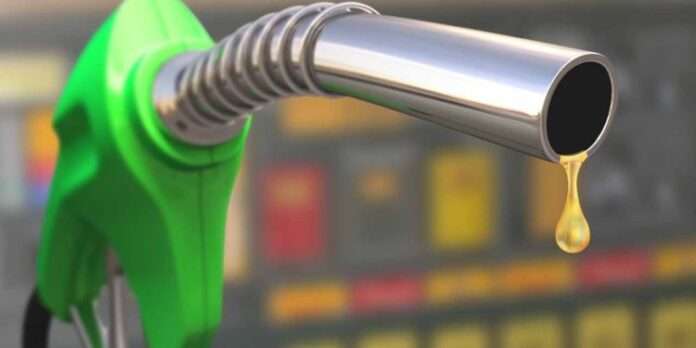As a result of the rupee’s continued depreciation against the US dollar, the price of petroleum products is expected to increase by more than Rs 13 per litre in the upcoming review, which is due on August 31.
As of August 24, 2023, the value of the dollar had increased by Rs 12.08 since that date.
In other words, as of September 1, the exchange rate will be the only factor driving up the cost of fuel and diesel. However, the prices of POL goods and crude oil remained fairly constant on the global market. The dollar’s value is anticipated to increase given that there are only six days left in the current fortnight.
In the past two weeks, the cost of petrol has increased by Rs 37.50 and the cost of diesel by Rs 40 per litre. However, in the most recent scenario, the dollar’s open market value was Rs 314 and its interbank value was higher than Rs 300.
According to industrial sources, the purchase of crude and POL products at higher US dollar values would lead to an additional increase in gasoline and diesel prices in the first two weeks of September, which could reach double digits.
Petrol prices will increase by Rs9.95 per litre and diesel prices will increase by Rs13.73 per litre if prices are calculated using the dollar value of August 24. However, the price of POL products will increase by double digits if the dollar keeps on rising and is permitted to float freely over the course of the next seven days.
Furthermore, from 0.5–1% 2–3 years ago, LC confirmation fees have gone up by 10%.
In light of this situation, Finance Minister Shamshad Akhtar and the central bank don’t seem alarmed, as they have not complied with the terms of the $3 billion loan from the IMF to limit the unstoppable US dollar.
Due to monthly fuel adjustment costs and quarterly tariff changes, the impact of the dollar’s strengthening would also be seen in higher electricity rates.
With input from the Ministry of Finance and the Power Division, the National Electric Power Regulatory Authority (NEPRA) has already increased the base price for a number of consumer categories by Rs 3 to Rs 7.50 per unit.
Given that the dollar’s value in the interbank market has reached Rs 300.33 with inflation at 28%, the basic tariff for FY24, which was set at Rs 287 with inflation at 17%, is far from reality.
Under the FCA heading and the heading for the quarterly tariff adjustment, the questionable base tariff would increase the tariff every month and every three months, respectively. The lives of the people would only become harder as a result.
The government has already declared its intention to increase the tariff by Rs 2.07 per unit as a result of the FCA adjustment in July 2023.
The law mandates that consumers pay for fuel price changes. The NEPRA will soon announce its conclusion regarding the tariff impact of the final quarter of FY23. In the final QTA of FY23, the government requested a tariff increase of Rs5.40 per unit with a three-month recovery period.
The government wanted to spread out the effects of the FY23 last quarter adjustments over six months of the winter season, from October 2023 to March 31, 2024, in order to lessen the price shock for the general public. By using this mechanism, the impact will be reduced to Rs2.31 per unit because the third quarterly adjustment for FY23, which was Rs1.24, will no longer have an effect after September 2023.
The government wanted to spread out the effects of the FY23 last quarter adjustments over six months of the winter season, from October 2023 to March 31, 2024, in order to lessen the price shock for the general public. By using this mechanism, the impact will be reduced to Rs2.31 per unit because the third quarterly adjustment for FY23, which was Rs1.24, will no longer have an effect after September 2023.
The consumption of electricity falls from 10,000 to 12,000 MW during the winter, and costs consequently decrease. In order to pass on the effects of the final quarterly adjustment of FY23 to consumers, the government has set a six-month window during the upcoming winter season.
In addition to the four tariff increases under the Quarterly Tariff Adjustment, Pakistani consumers may experience additional monthly tariff increases in the head of the FCA during the current fiscal year 2023–24 due to the uncontrollable dollar.






